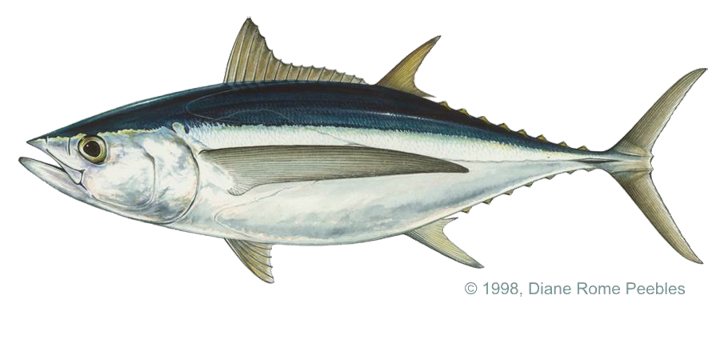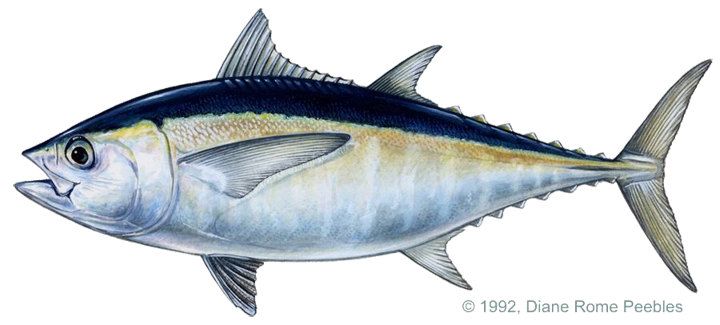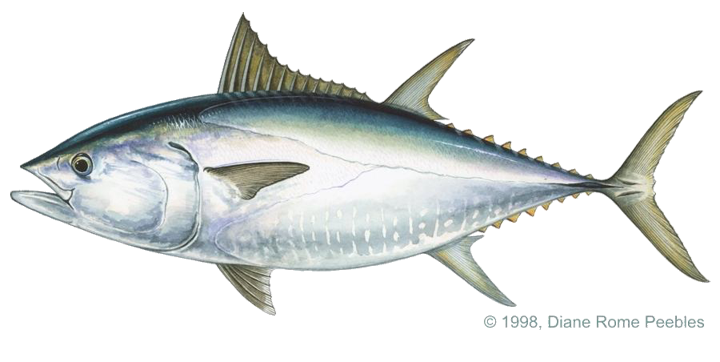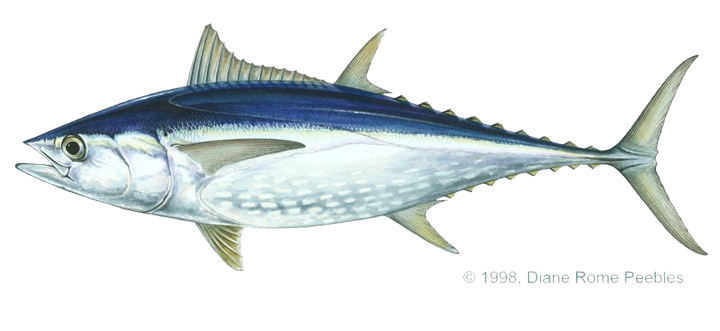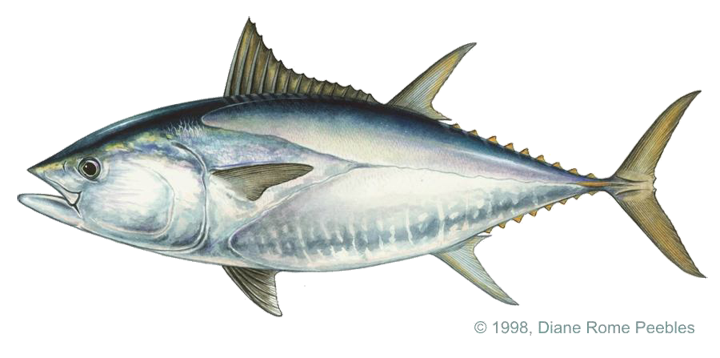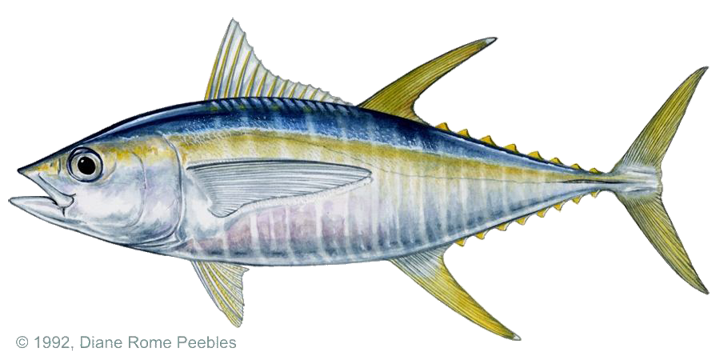Game Fish Identification Reference Guides
Tuna, Pacific bluefin
(Thunnus orientalis)
(Thunnus orientalis)
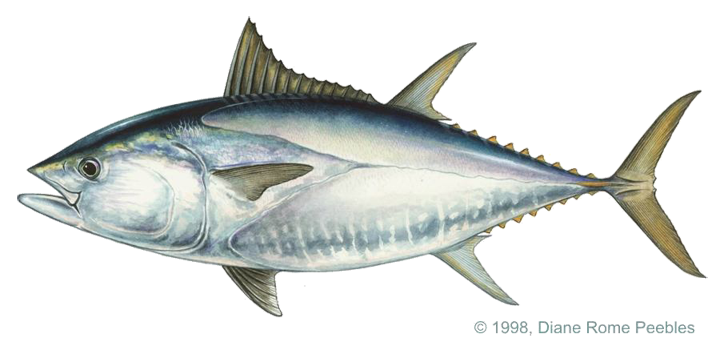
(Temminck & Schlegel, 1844) ; SCOMBRIDAE FAMILY
Worldwide there are three species of bluefin tuna. Two of the species, the Pacific and southern bluefin were thought to be a subspecies of Atlantic bluefin (Thunnus thynnus) because of their similar appearance. Scientists also thought that Pacific bluefin were restricted to the northern hemisphere, but the old adage that the ocean has no fences appears to be true as there are more and more substantiated reports of Pacific bluefin making deep forays down under. In fact, the new millennium has seen impressive runs of Pacific bluefin off of New Zealand, and several All-Tackle records have been caught there recently, including the current record of 716 lb 8 oz. Oftentimes Pacific bluefin tuna may be distinguished from southern bluefin by the dark color of their caudal keels at the base of the tail. Southern bluefin tuna generally have a yellow or yellowish coloration on the caudal keel, but this may not be a 100% accurate means of differentiating between species. Because Pacific bluefin may be difficult to distinguish from southern bluefin, IGFA will require that a genetic analysis accompany the application for any Pacific bluefin caught in the southern hemisphere that weighs less than the current southern bluefin All-Tackle record of 348 lb.
Worldwide there are three species of bluefin tuna. Two of the species, the Pacific and southern bluefin were thought to be a subspecies of Atlantic bluefin (Thunnus thynnus) because of their similar appearance. Scientists also thought that Pacific bluefin were restricted to the northern hemisphere, but the old adage that the ocean has no fences appears to be true as there are more and more substantiated reports of Pacific bluefin making deep forays down under. In fact, the new millennium has seen impressive runs of Pacific bluefin off of New Zealand, and several All-Tackle records have been caught there recently, including the current record of 716 lb 8 oz. Oftentimes Pacific bluefin tuna may be distinguished from southern bluefin by the dark color of their caudal keels at the base of the tail. Southern bluefin tuna generally have a yellow or yellowish coloration on the caudal keel, but this may not be a 100% accurate means of differentiating between species. Because Pacific bluefin may be difficult to distinguish from southern bluefin, IGFA will require that a genetic analysis accompany the application for any Pacific bluefin caught in the southern hemisphere that weighs less than the current southern bluefin All-Tackle record of 348 lb.













